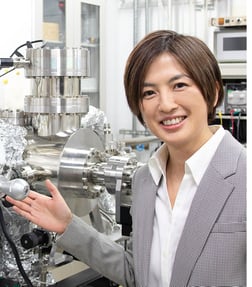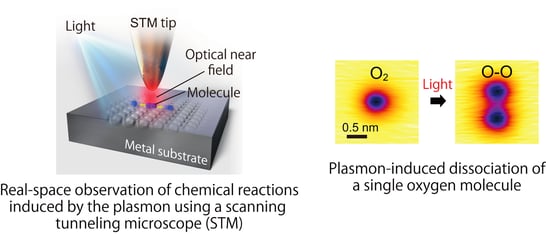Young Faculty / 064
Associate Professor Emiko Kazuma, Kim Laboratory, Department of Applied Chemistry

< Biography >
March 2012 : Ph.D. in Department of Applied Chemistry, The University of Tokyo
April 2012 : Postdoctoral Researcher, IIS, The University of Tokyo
April 2013 : Superlative Postdoctoral Fellow (SPD) in JSPS
April 2015 : Special Postdoctoral Researcher (SPDR), RIKEN
April 2018 : Research Scientist, RIKEN
October 2018 : PRESTO Researcher, JST (concurrent)
April 2022 : Associate Professor, Department of Applied Chemistry, The University of Tokyo
< About the Research >
Metal nanoparticles such as gold and silver nanoparticles exhibit brilliant colors due to strong light absorption caused by localized surface plasmon, of which colors have long been used for stained glass. The plasmons can collect light in the area of several tens of nm around a metal nanoparticle and generate a localized strong electric field (optical near field). Thus, the applications of the plasmons to highly efficient conversion of solar energy, chemical reactions, and local spectroscopic techniques have been expected. In chemical reactions, it has been reported that the plasmons not only enhance photochemical reactions but also induce reactions that cannot be induced with conventional light. In order to elucidate the mechanisms and elementary processes of chemical reactions induced by the plasmons, we have performed the real-space observation of chemical reactions in the optical near field by using a scanning probe microscope and obtained fundamental knowledge that cannot be obtained by macroscopic methods. So far, we have achieved observations of chemical reactions at a single-particle and even a single-molecule level, and have elucidated the mechanisms and elementary processes of reactions in detail.

We have addressed not only the analysis of chemical reactions but also the development of surfaces as reaction sites to achieve the control of chemical reactions induced by the plasmons.
< Future Aspirations >
By combining macroscopic observation and analysis with the microscopic research we have conducted, we will accumulate fundamental knowledge on catalyst surfaces that enable highly efficient and highly selective chemical reactions induced by light or plasmons and finally contribute to the development of technologies for the effective use of solar energy from the standpoint of chemistry.
< URL >
Kim Laboratory : https://www.appchem.t.u-tokyo.ac.jp/lab/kim/
You May Also Like
These Related Stories
